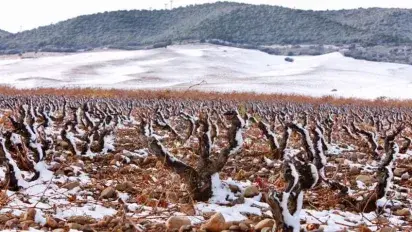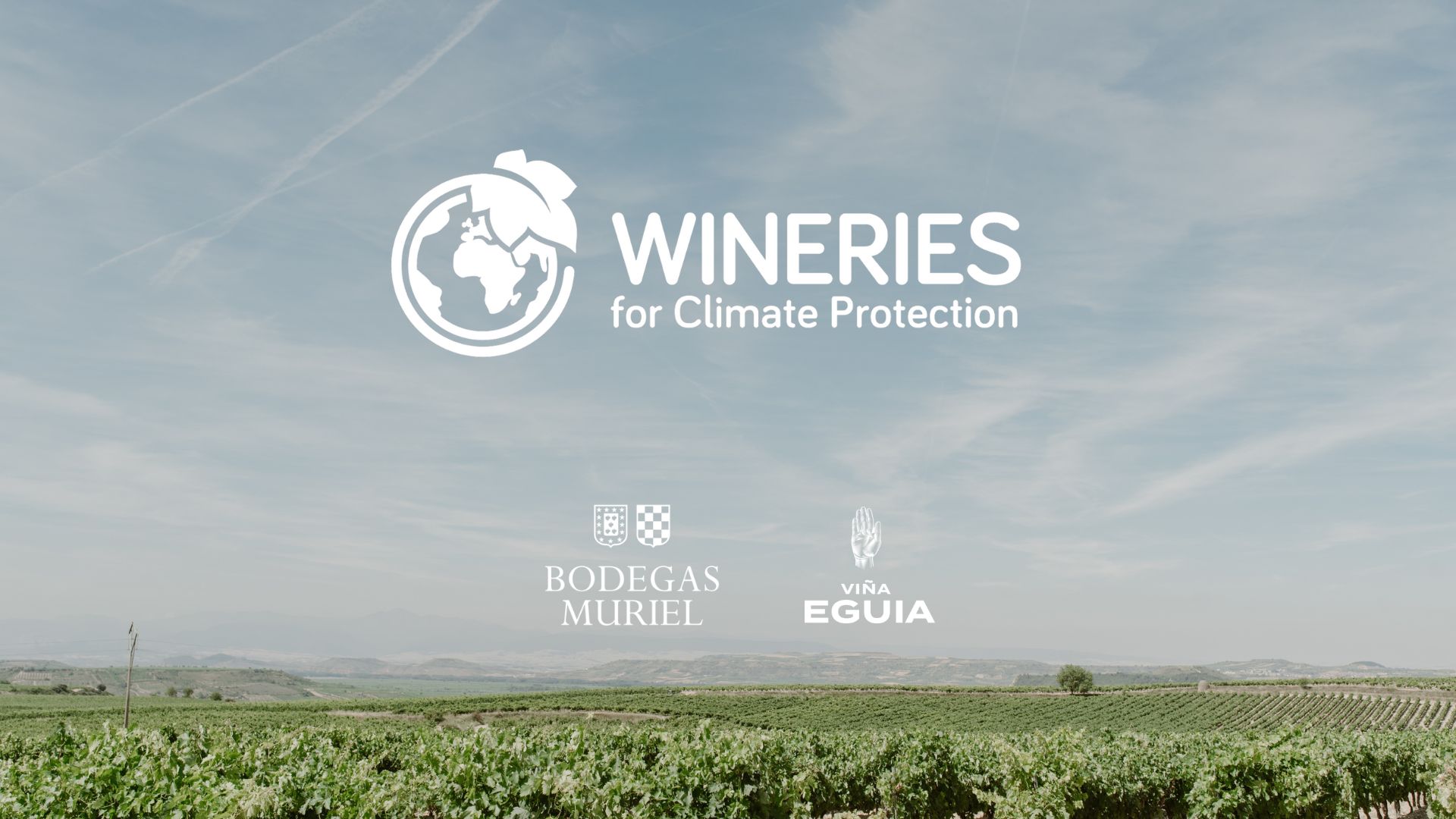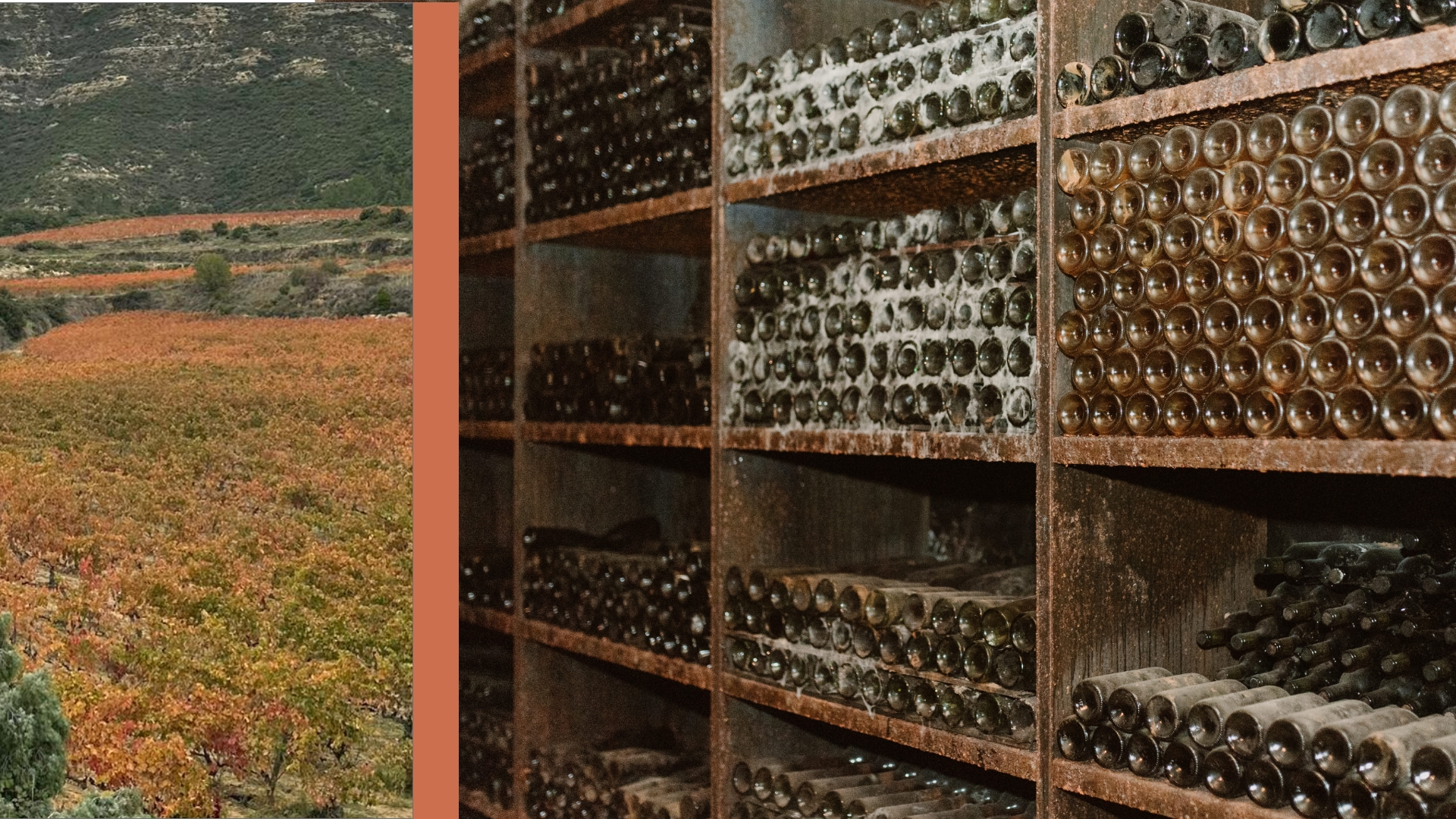Monte Yerga is an elongated mountain range with gentle shapes that lies 70 Km (43 miles) away from Elciego, our founding village. It is a ridge of the Sistema Ibérico mountain range and it forms the eastern boundary of the Autonomous Community of La Rioja (as well as the DOCa Rioja).
Part of our future lies in Yerga. In 2017, we purchased a 430-hectare (1,060 acres) estate in Soldevilla and Montalvillo, on the mountain's northeastern slopes, in the vicinity of Alfaro. Out of the total land area, 184 hectares are under vine, mostly planted to Tempranillo and Mazuelo.
One of the main assets of this large vineyard is its elevation, reaching 700 metres of altitude. It is a rugged landscape, far away from inhabited areas. A secluded spot with never-ending views of the Ebro Valley, the back-breaking work of mountain wine growing is deeply felt.
In future posts we will write about the geography and natural features of Monte Yerga, a little-known place which turns to be a very interesting spot for outdoor activities, as local touristic guides point out. Here we will focus on the historical aspects of this singular spot in Rioja's eastern end.
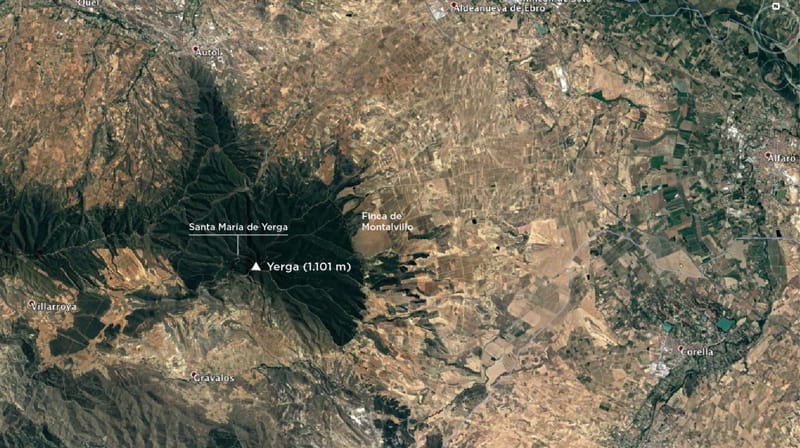
Yerga is history
History has left notable traces in Yerga, such as the old Santa María hermitage, whose ruins lie at almost 950 meters of altitude, very close to the mountain summit. According to some legend, it is said that the first Cistersian community in the Iberian Peninsula was founded here in the 12th century. Actually, it was a group of humble farming facilities that had a quite intermittent occupation: daily life was rather harsh at such heights, particularly during the freezing winter.
This farm and its hermitage depended on the Cistersian monastery of Santa María la Real in Fitero, jut on the other side of Yerga mountain.
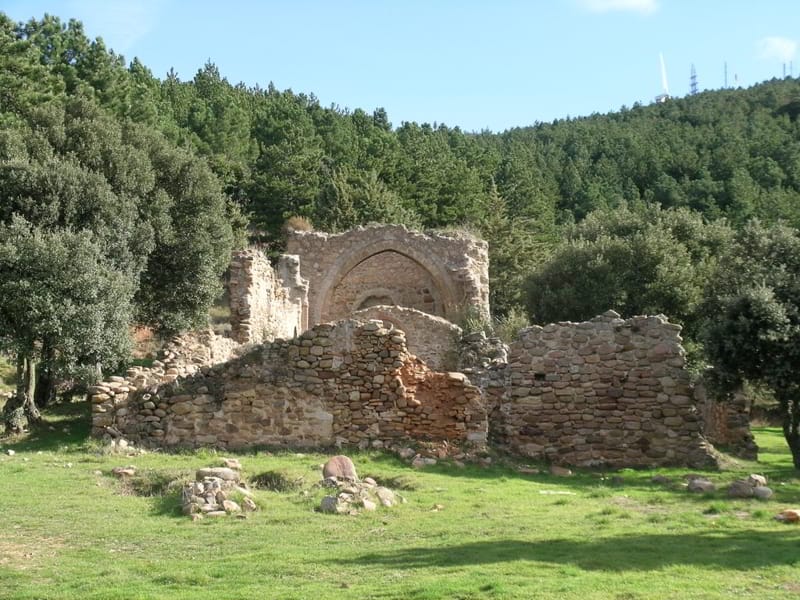 Santa Mariía de Yerga: the hermitage ruins
Santa Mariía de Yerga: the hermitage ruins
Yerga is wine history
In the High Middle Ages, it is likely that vines were planted on the Yerga slopes considering the region's Roman substrate. Since prehistoric times, the Ebro valley has been a natural corridor for all kinds of people and goods. It was the entry point for Romans on their way towards inland regions in the Iberian Peninsula. Along the way they mixed with Celtiberian tribes and consolidated population centres like Graccurris and Calagurris, currently Alfaro and Calahorra.
The new Roman settlers established a wine growing tradition in the area. Over the centuries, on the transitional lands nestled between the valley and the mountain, local farmers have grown small vineyards. Time and natural conditions have selected the most suitable varieties: Garnacha and Mazuelo. Tempranillo was planted on the second half of the 20th century and adapted well to these gentle slopes. Over the years winegrowing has gradually expanded in Yerga where large extensions of land coexist with small old vine plots, a testimony to ancestral traditions. It is a fact that winegrowing in Yerga shows great potential as it is deeply-rooted in the region and its history. We are lucky to be able to offer our contribution with our own vines.
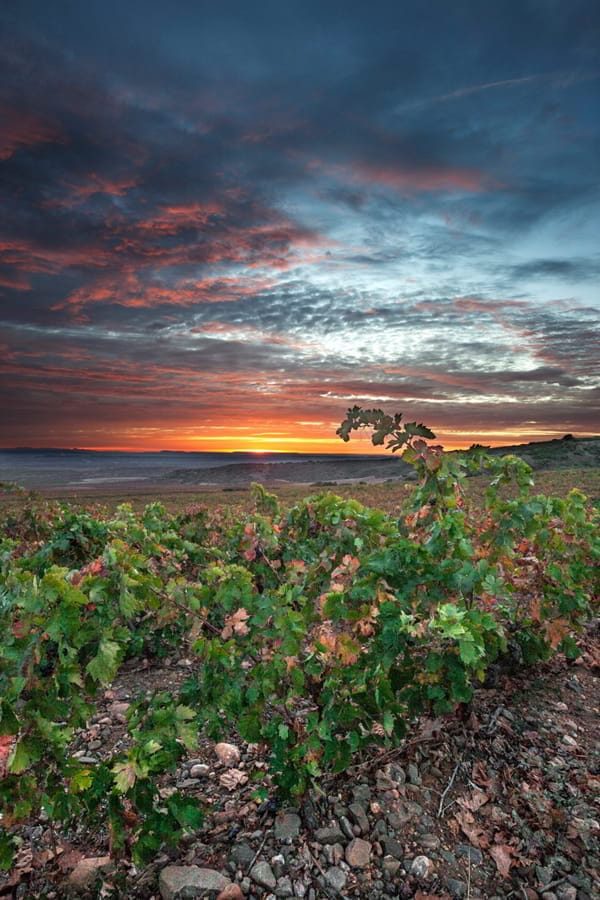 Beautiful autumn dawn in the vineyards of Yerga
Beautiful autumn dawn in the vineyards of Yerga


You may also be interested in:
